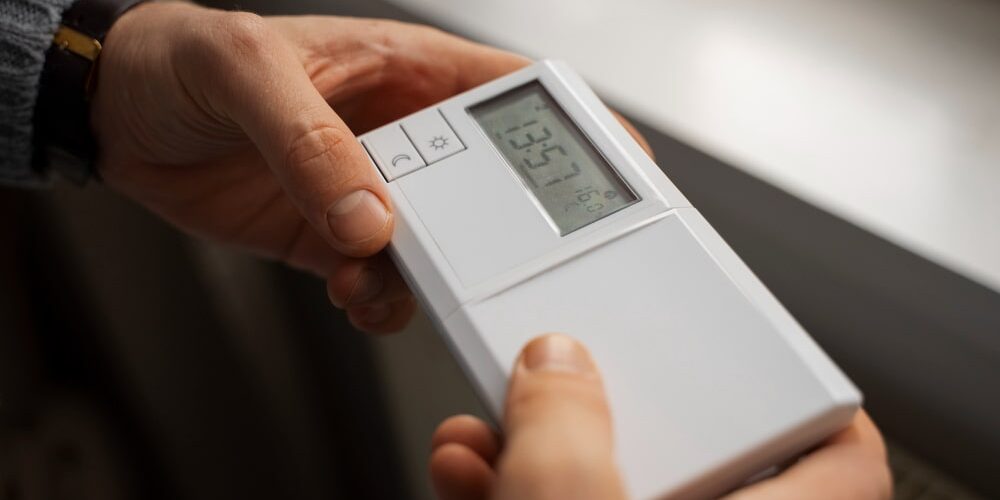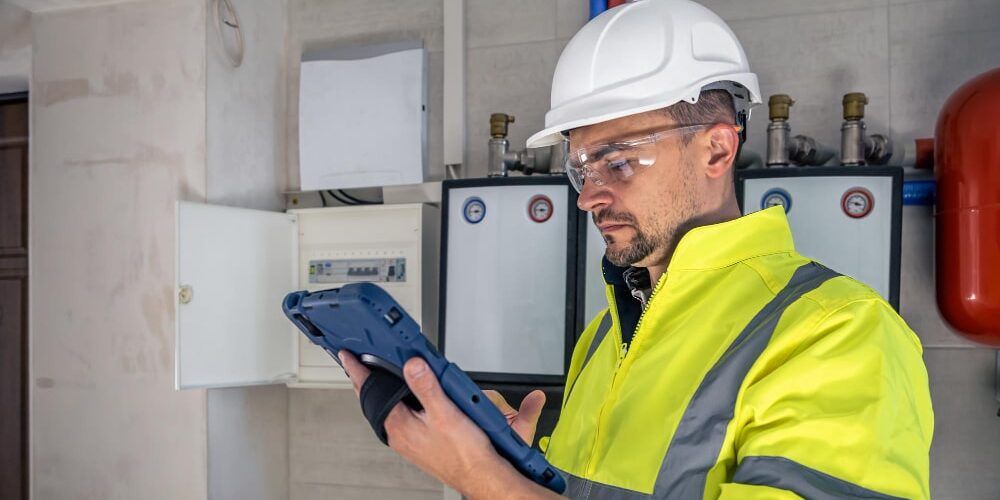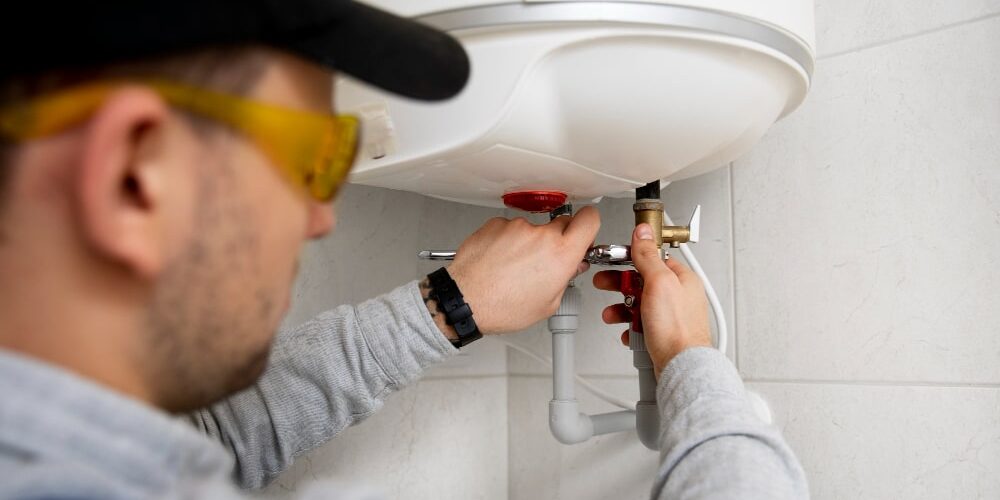Are you fed up with expensive energy bills and seeking an efficient way to utilise your solar panels to heat hot water? Solar iBoost is the solution you’ve been searching for! This advanced system uses free solar energy to heat your water, reducing your dependence on the grid and helping you save money. In this blog post, we’ll examine everything you need to know about Solar iBoost, including its advantages, key features, considerations for installation, and a comprehensive cost-benefit analysis.
Key Takeaways
- Solar iBoost is a system that utilizes excess solar energy to power an immersion heater, reducing reliance on grid energy and increasing self-consumption.
- It can be integrated with new and existing solar PV systems to optimise free solar energy usage while meeting safety standards.
- Assessing home suitability includes analyzing the performance of your current system, estimating hot water demand & potential savings, plus comparing Solar iBoost with alternative solutions.
What does a solar iBoost do?

Solar iBoost is a game-changer for homeowners with solar panels, as it diverts excess power to your immersion heater, increasing your self-consumption and reducing your dependence on grid energy.
This intelligent system comprises two main components: the Solar iBoost+ Controller, typically installed in your airing cupboard, and a ‘Sender’ attached to your electricity meter. These two components provide free hot water by maximising your surplus solar energy.
The Role of Immersion Heaters in Solar iBoost Systems
Immersion heaters, installed within a hot water cylinder or tank, are fundamental to Solar iBoost systems as they convert surplus solar energy into hot water. The Solar iBoost+ can house two immersion heaters, providing a steady hot water supply.
By efficiently converting solar energy to heat your water, immersion heaters help you save on your energy bills and reduce your carbon footprint.
Compatibility with Solar PV Systems and Battery Storage
A prominent benefit of Solar iBoost is its seamless integration with solar PV and battery storage systems. This means you can optimise your energy usage and savings by diverting excess solar power generated by your solar panels to heat water or charge your batteries.
This efficient system ensures that you get the most out of your solar energy investment in the solar system.
Integrating Solar iBoost with New and Existing Systems
Whether your solar PV system is new or pre-existing, Solar iBoost can be effortlessly integrated, boosting its overall efficiency. Connecting the Solar iBoost to your existing solar PV system and hot water storage tank will optimise your energy usage and reap the benefits of free solar energy for water heating.
Consider factors such as the distance between the tank and the electricity meter, airing cupboard requirements, and compliance with product and safety standards.
Harnessing Free Solar Energy for Water Heating

Free solar energy for water heating presents a remarkable opportunity to reduce energy bills while minimizing your carbon footprint. Solar iBoost takes advantage of surplus solar energy by directing it to power your immersion heater, ensuring that you have hot water whenever needed.
To get the most out of your Solar iBoost system, it’s important to consider factors such as hot water storage and immersion controller efficiency, which we’ll discuss in more detail below.
Hot Water Storage and Immersion Controller Efficiency
Efficient hot water storage and immersion controller systems are vital to maximizing the benefits of your Solar iBoost system. Modern electric water heaters are 100% efficient, and studies suggest that hot water cylinders may lose as little as 1 kWh to 2.5 kWh of heat per day.
Ensuring your hot water storage and immersion controller systems operate at optimum efficiency allows maximum utilisation of your panels’ free solar energy.
Impact on Energy Usage and Gas Boiler Dependency
Solar iBoost has the potential to drastically cut down your energy consumption and reliance on gas boilers. By harnessing excess energy from surplus solar power to heat water, you can save up to 50% on your hot water heating bills and use surplus energy.
This leads to substantial savings and helps reduce your carbon emissions, contributing to a more sustainable and greener energy grid.
Monitoring Surplus Power and Savings
Keeping track of surplus power and savings is vital to gauge the performance of your Solar iBoost system and unlock its full potential. The built-in display of Solar iBoost shows the following readings:
- Saved Today
- Saved Yesterday
- Saved 7 Days
- Saved 28 Days
- Total Saved
These readings give you a clear picture of how much energy you’re saving.
By closely monitoring these figures, you can ensure that your system is operating at peak efficiency and adjust your usage habits accordingly.
Installation Process and Considerations

While installing Solar iBoost is a simple process, carefully considering certain factors is crucial to guarantee peak performance and safety. These factors include the distance between your hot water tank and electricity meter, airing cupboard requirements, and product and safety standards compliance.
In the following sections, we’ll discuss these considerations in more detail.
Distance Between Tank and Electricity Meter
The distance between your hot water tank and electricity meter is crucial for properly functioning your Solar iBoost system. By keeping the distance between the gas and electricity meters to a minimum, you can ensure optimal performance and minimise potential issues.
This is an essential factor to consider during the installation process.
Airing Cupboard Requirements
When installing Solar iBoost, it’s important to meet the requirements for an airing cupboard. There must be a gap of at least 300 mm between the boiler top and the cupboard ceiling, adequate ventilation, and an open door.
Meeting these requirements will ensure a successful Solar iBoost installation and optimal system performance.
Product and Safety Standards Compliance
Adhering to product and safety standards is essential for a reliable and secure Solar iBoost system. Solar iBoost complies with all applicable product and safety standards, such as CE, RoHS, and UL.
Ensuring compliance during installation will guarantee your system operates safely and efficiently.
Solar iBoost Features and Customization

Solar iBoost boasts various customizable features, such as distinct settings for winter and summer, smart meter integration, and compatibility with various household appliances. These features allow you to optimize your Solar iBoost system for maximum efficiency and savings.
In the following sections, we’ll delve deeper into these features and how they can benefit you.
Separate Winter and Summer Settings
Customizable settings, such as separate winter and summer, help you optimize your Solar iBoost system for each season. This ensures that the system is tailored to the specific needs of each season, leading to improved comfort and energy savings.
By adjusting the settings for each season, either manually or with the assistance of a professional installer, you can achieve optimal performance throughout the year.
Integration with Smart Meter and Export Meter
Integration with smart meters and export meters enhances monitoring and control of your Solar iBoost system. Smart meters record the electricity produced by your solar panels and the energy consumed by your household. In contrast, export meters measure the electricity produced by the solar panels and the energy exported to the grid.
This integration allows for more effective solar energy utilisation, providing cost savings on your energy bills.
Compatibility with Household Appliances
Solar iBoost is compatible with various household appliances, increasing its versatility and usefulness in your home. This compatibility ensures seamless integration with your existing setup and allows you to get the most out of your Solar iBoost system.
It is designed to be easy to install and use, with intuitive controls and a user-friendly.
Evaluating the Cost-Benefit of Solar iBoost

Before deciding to invest in Solar iBoost, thoroughly evaluating its cost-benefit analysis is crucial to ascertain its suitability for your home.
In the following sections, we’ll discuss factors such as the initial investment, payback period, additional savings from reduced grid energy consumption, and comparison with alternative solutions.
Initial Investment and Payback Period
The initial investment for Solar iBoost is £500 plus Value Added Tax (VAT). When assessing if this investment is right for you, consider the payback period – the time it takes for the system to pay for itself through energy savings.
By evaluating your solar PV system’s performance and estimating your hot water demand and potential savings, you can clearly see whether Solar iBoost is a worthwhile investment for your home.
Additional Savings from Reduced Grid Energy Consumption
Solar iBoost can reduce your energy bills by up to 25%, depending on your usage and the size of your system. By harnessing free solar energy to heat your water, you’ll decrease your dependence on the grid and save on your energy bills.
These additional savings contribute to the overall value and appeal of Solar iBoost.
Comparing Solar iBoost with Alternative Solutions
Before committing to Solar iBoost, it’s important to compare it with alternative solutions, such as electric immersion heaters, gas boilers, and heat pumps.
By weighing the costs, compatibility, and reliability of these alternatives, you can decide whether Solar iBoost is the best choice for your home.
Assessing Your Home’s Suitability for Solar iBoost

To ascertain if your home is apt for Solar iBoost, you need to:
- Evaluate your solar PV system’s performance
- Calculate your hot water demand along with potential savings
- Take into account factors like warning lights and system compatibility.
In the following sections, we’ll guide you through these factors to help you decide if Solar iBoost is the right choice for your home.
Analyzing Your Solar PV System’s Performance
First and foremost, you’ll need to analyze your solar PV system’s performance to determine if Solar iBoost is a worthwhile investment. Assessing the performance of your solar PV system can help you detect underperformance or inefficiency, and make informed decisions about investing in Solar iBoost.
By monitoring energy production, comparing it to expected performance, and evaluating the efficiency of your system, you can get a clear picture of whether Solar iBoost is right for your home.
Estimating Hot Water Demand and Potential Savings
Once you’ve analyzed your solar PV system’s performance, you must estimate your hot water demand and potential savings. By understanding your household’s hot water consumption habits and evaluating the potential savings offered by Solar iBoost, you can decide whether this system is right for your home.
Is a solar iBoost worth it?
Whether a solar iBoost is worth it depends on your specific circumstances and needs. If your solar PV system is operating efficiently and meeting your hot water demands, Solar iBoost may not be necessary.
However, if your system is not achieving optimal efficiency and you’re looking to cut your energy bills, Solar iBoost could be a viable option.
What is the red warning light on solar iBoost?
The red warning light on Solar iBoost indicates that the system is not operating correctly and requires inspection. If you notice this light illuminated, inspect the system for any issues and contact a qualified technician if necessary.
Regular inspection and maintenance of your Solar iBoost system will help ensure its proper functioning and safety.
Summary
In conclusion, Solar iBoost is an innovative solution for harnessing free solar energy to heat water, reduce energy bills, and decrease carbon footprint. By considering factors such as system performance, hot water demand, and potential savings, you can decide whether Solar iBoost is the right choice for your home. So why not explore the benefits of Solar iBoost and start saving on your energy bills today?
Frequently Asked Questions
Is a solar iBoost worth it?
The Solar iBoost can save you hundreds of pounds over its lifetime, particularly if you have an electric boiler or immersion heater. However, it is only worth getting if your system regularly exports unused energy.
What does a solar iBoost do?
Solar iBoost is an immersion diverter which allows you to utilise free hot water powered by your solar panels, thus cutting water heating costs and reducing the strain on your boiler. Installing Solar iBoost+ helps to make the best use of free solar energy.
Which solar diverter is best?
For those in the UK, the Solar iBoost from Marlec is the best power diverter option, offering reliable performance between £250-£300.
What is the payback period for solar iBoost?
The Solar iBoost pays for itself in approximately three years or less, and with oil-fired heating systems, the payback is under two years.
How does Solar iBoost work?
Solar iBoost harnesses excess solar energy and redirects it to your immersion heater, helping you maximize self-consumption and reduce dependence on grid energy.
